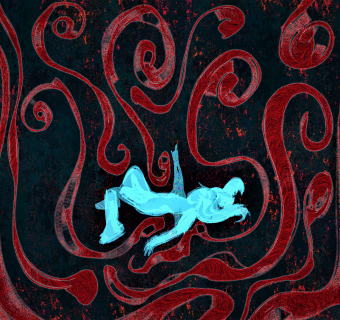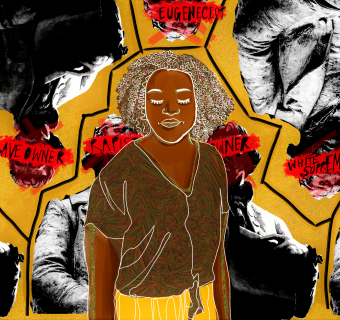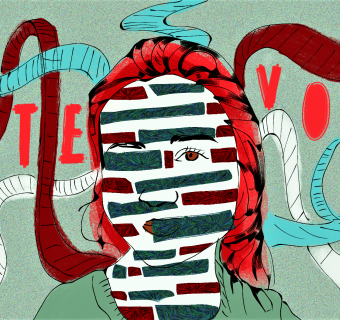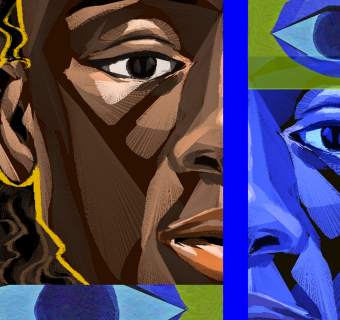“In a rape culture, both men and women assume that sexual violence is a fact of life, as inevitable as death or taxes. Much of what we accept as inevitable is in the fact the expression of values and attitudes that can change.”
- Emilie Buchwald, Transforming a Rape Culture
There is a very distinct rape culture in America.
Much of what generates and facilitates this culture is the media’s recount of rape cases. There are specific word choices and angles of articles and news stories about rape that create a culture where rape is inevitable. Worse over, it creates a culture that tends to remove blame from the rapists and places it on the victim. There are several different trends in media portrayal of rape cases, which cultivate the state of our rape culture.
One aspect that may go unnoticed in news stories is the particular phrasing chosen for describing rape. Oftentimes you will find that articles will describe the perpetrator as having “had sex with” the victim, rather than using the word “rape.” I will give credit to news outlets that there is a legal limitation to using the word “rape” or “rapist.” There must be some consideration given to the accused in regard to their conviction. News and media outlets must respect the institution of “innocent until proven guilty.” Not doing so risks incidents of libel. Yet this phrasing devalues the severity of the incident for the readers.
The phrase “have sex with” often has a connotative assumption of consent. While editors are protecting themselves legally by not naming the perpetrator as a rapist before being convicted as such, they are at the same time downplaying the jarring reality that the victim was sexually assaulted and violated. Describing an account of sexual assault that is fair both to the victim and the accused is certainly difficult for news writers, given situations without legal convictions. Yet it is important to find a description that does not minimize the true nature of the actions taken against the victim.
The actions and choices of the victims become a point of interest for these types of news stories. You often find articles that note what the victim was wearing, how much makeup she had on, whether she snuck out of her house or had been drinking. This attention to the actions and choices of the victim revokes credibility from the victim as well as responsibility from the rapist.
A New York Times article published in 2011 exemplifies this focus on the appearance of rape victims. The article made a point to quote residents in the neighborhood where the assault took place, who noted that, “[…] she dressed older than her age, wearing makeup and fashions more appropriate to a woman in her 20s. She would hang out with teenage boys at a playground […]” Including that particular quote ultimately says that it was the 11 year old girls choice of dress and makeup which led to her assault.
Visit this link for the full article.
Calling attention to the victim's attire, general style of dress, or amount of makeup, ultimately signals to readers that these choices led to her attack. Again, all responsibility for the attack is placed on the victim. Rape is not inevitable. Nothing a woman does can ever be considered "asking" to be raped.
Claire Kaplan, Director of Sexual and Domestic Violence Services at U.Va. agreed that this attention to the victim is harmful.
“Why don't you ask, "What was HE doing? Why did he rape her? (if the perpetrator was a he and the victim a she) or "Why does he hit/abuse/humiliate/strangle her?"
Yet with stories continually including descriptions of the way the victims dress and carry themselves, people start to believe that perhaps women are at fault in cases of their own rape—maybe if she didn't dress older than she is, or wear a lot of makeup, she wouldn't have gotten raped..
There is also a significant amount of attention paid to the actions of the victims leading up to their assault. Were they drinking? How much did they drink? This works the same way as focusing on the dress of the victim. It discredits the victim and removes responsibility from the rapist. It tells people that the best rape prevention for women is to limit their alcohol intake. It is undeniable that alcohol alters decision-making and judgment, but rape is not inevitable.
Continually paying attention to the actions of the victim creates an understanding of prevention that is unrealistic. Suddenly women who are raped after they have been drinking are partly responsible for what happened to them. Men are never given this kind of warning to limit the amount of alcohol they drink. This warning is saved for women, as it is an understanding that some how women have the ability to prevent rape occurring to them.
If you listen to what Joseph DiBenedetto says in response to the Maryville rape case, he is sure to draw attention to the actions of the young teen. He says, “She is leaving her home at 1am in the morning, and nobody forced her to drink, and what happens? She gets caught by her mom, she’s embarrassed, and the easy way out is to say, ‘Mom, someone took advantage of me.’” His disregard for the credibility of the teen’s claim stems from his assumption that her actions led to her assault. It leaves him saying the disheartening phrase, “She didn’t deserve to be raped, but…”
Visit this link for the full video clip of Joseph DiBenedetto.
Rape and sexual assault are not inevitable occurrences in life. However, with the victim-blaming nature of our media today, we are being misled to believe that this is inevitable. The media holds a powerful hand in cultivating understandings of cultural phenomenon. If these patterns are to continue, the understanding of rape and sexual assault will be one defined by the responsibility of the victim to prevent their own rape. Victims of sexual assault will have very little support.
Claire Kaplan brings up the point that there is a risk of a significant decrease in the number of reported assaults as well.
“"With so much obsession on the part of media about how sexual assault and intimate partner violence survivors dress, behave, drink, and engage in "risky behavior," it amazes me that survivors have the courage to report their assaults at all. “






